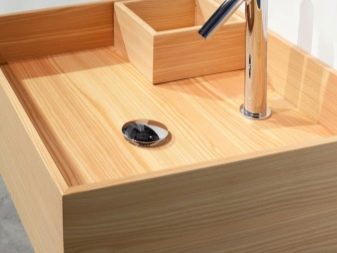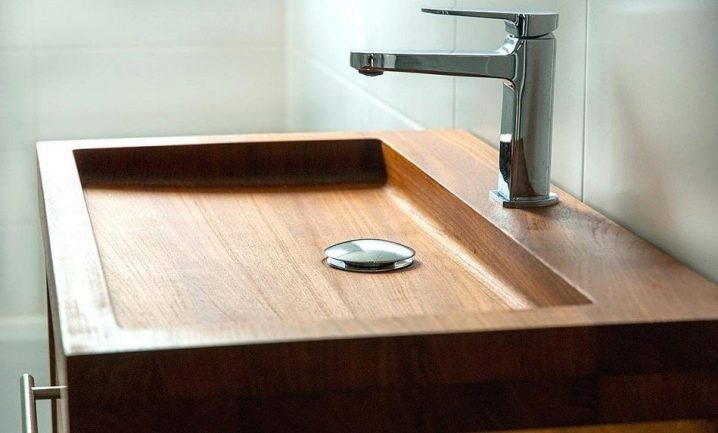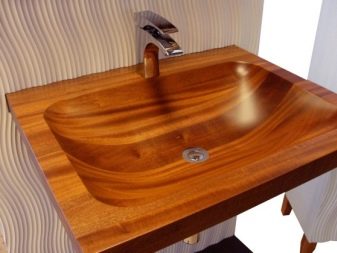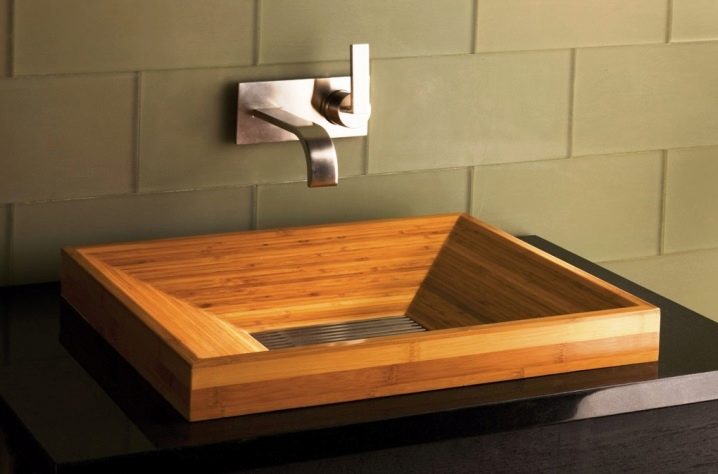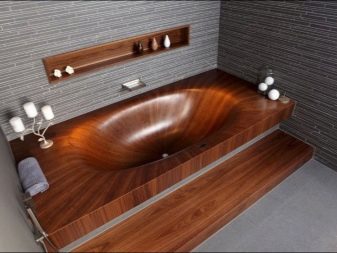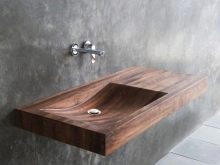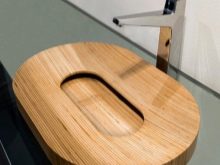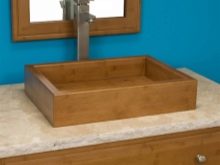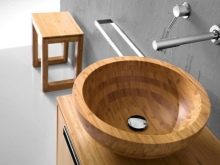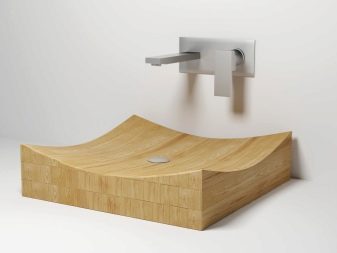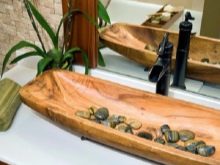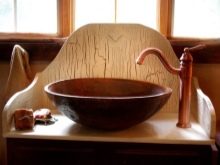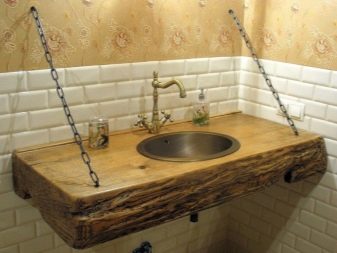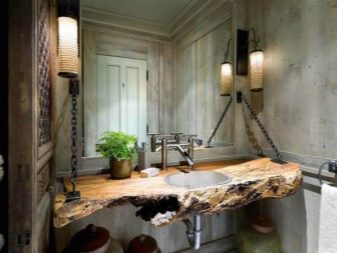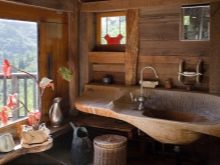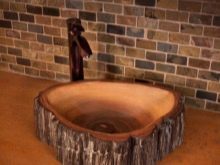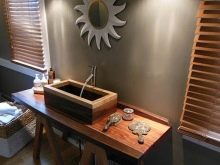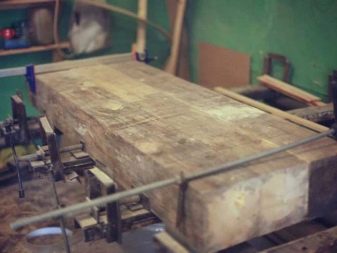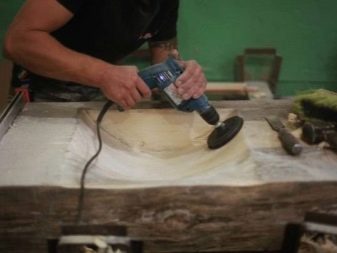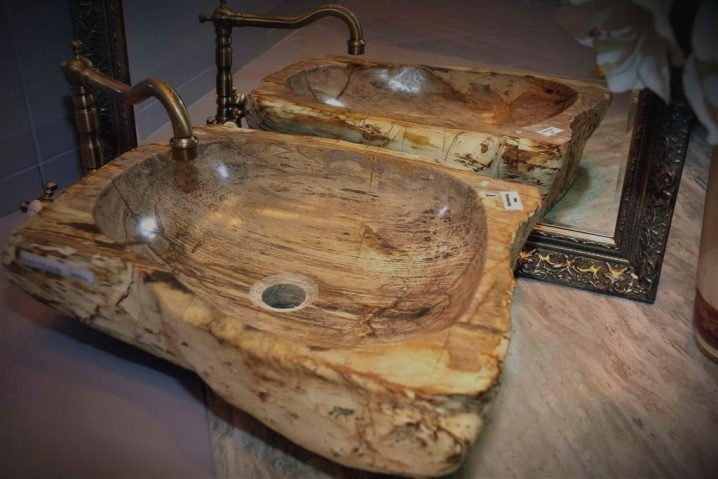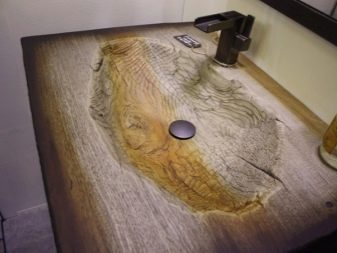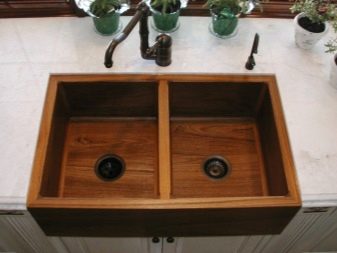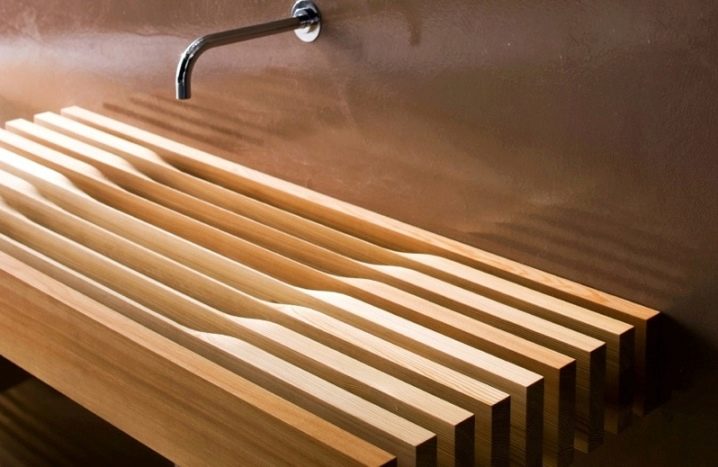Wood sinks: features and step by step instructions
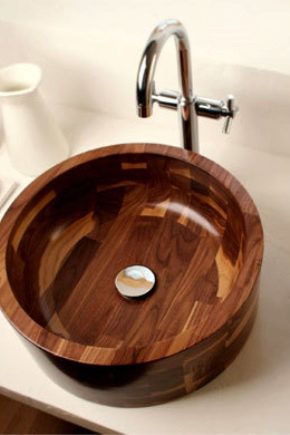
With the development of modern production technologies, over the past century and a half, we have become accustomed to plumbing fixtures made of ceramics and metal, with which you will not be surprised. The most fanciful models of porcelain and earthenware have become commonplace. Stainless light steel for kitchen sinks replaced by heavy enamelled cast iron.
To give exclusivity to the home, try to use unusual materials or use them in an unusual performance. So, sinks from glass or a natural stone are considered as an extraordinary design decision. They can be quite expensive.And what about the tree? According to many, the tree is difficult to imagine in the plumbing - it can only serve as furniture or decorative element. However, this is a big mistake, and modern designers are successfully destroying this myth.
Special features
Since ancient times, wooden objects and coatings have been widely used in household items. This is an excellent material for the construction of houses, baths, utility rooms. It is difficult to imagine a real Russian bath without wooden water tanks: barrels, tubs, fonts. The tree interacts well with water, and with proper processing of the material can serve for many years. Wood fiber is environmentally friendly, gives the room a kind of aesthetics, as well as the ability to emphasize the interior design. For this reason, wooden sinks for the sink have recently been particularly popular. In its finished form, the wooden sink acquires a stylish gloss. Such a model can be one of the main design accents of the room.
Of course, to make the sink from wood look stylish and preserve the functionality of the material for a long time, the wood must be subjected to special treatment.That is why in the production of such products when polishing is used multi-layer protection with varnish and certain compounds, allowing to increase the resistance of wood to water.
Another feature of wooden shells is the property of the material to acquire a darker shade over time. For each breed, this factor is individual. Manufacturers who are interested in the quality of their products will definitely offer and advise a set of tools capable of maintaining the original shades of wood. Some models of shells require mandatory periodic processing of special oils.
The basic rule of caring for a wooden sink is to avoid caustic cleaners containing abrasives in their composition.
Materials
Wood is a natural material. Like all life on the planet, it is associated with water. Beginning from the growth of sunflower seeds, finishing with wood processing, water is always present somewhere nearby. In the old days, ships were built from wood, wood was floated down rivers, some types of wood were treated by soaking or flooding. For example, an oak after prolonged soaking acquires special strength, so the myth that wood cannot be combined with water does not withstand the test of facts.
Over time, the masters empirically determined which tree species are most suitable for interacting with water. Nowadays, shells are made from the following materials.
Oak
One of the most durable wood species, which acquires additional strength from water. It was from it that the first aqueducts were made in medieval Europe. Oak has a wide range of shades that allows you to choose the perfect option for every taste.
Teak
Valuable material that is high in rubber. Due to this property, teak shells have additional water-repellent properties. Oily substances in this wood prevent the formation of fungus and mold. Under the influence of water, wood does not darken with time, retaining its original color.
Bamboo
A durable material that has a wide color spectrum from the lightest to deep dark shades. Bamboo is somewhat cheaper than oak and teak, as it does not fully fall under the definition of "tree".
Hardwood
The most economical option, as products made from them are not so sophisticated and durable. However, the wood of maple, birch, acacia or walnut perfectly treatable, takes any form, and under the influence of special compounds becomes quite strong.In production, the method of pressing and gluing small particles of wood, impregnating with wax and oils, lamination is used. But the product can be made from a solid array, followed by processing and impregnation.
Style Directions
First of all, wooden sinks are able to emphasize the style of rooms oriented to natural wood.
The tree is perfectly combined with any other materials, therefore, for the decor of the sink, items from:
- glass;
- natural stone;
- metal.
Favorite styles of designers for incorporating wood sinks into the interior.
- Country music;
- Eco;
- Ethno.
- A rustic design motif will sparkle with new colors, if you add a wooden washstand decorated with carvings to the style of a “Russian hut” or American country style.
- Stylish wooden shells will decorate the style of the chalet, give it a nobleness without separation from the surrounding natural environment.
- Rustic style; rough wood will add brutality, especially when combined with untreated stone.
- The tenderness of Provence will emphasize the white oak sink and the forged ornament with patina or gilding.
- A natural element will be added to the eco style,which does not happen much in a similar interior. The eco-style washbasin can be made from natural or artificial rattan.
- But the refined classics are not alien to the unusual manifestation of the forms and textures of wooden shells. Clear geometric shapes, shining varnish on noble wood, will look truly luxurious and respectable.
- But for cutting-edge styles, it is better to choose a different material, more close to the artificial raw materials and the latest technologies.
Sink your own hands
Make a sink for a house in the village with their own hands will not be very difficult if you have the skills of carpentry. The main advantage of such a product will be its originality and a piece of your creativity. The simplest option is to cut the container from a solid wood or well-glued bars.
Step-by-step instructions will allow you to figure out how to make your own sink., possessing school knowledge from the lessons of labor.
- Decide on the size and material. The width and depth of the tank will depend on your preferences and the availability of available web.
- Having cleared the top layer of wood, apply the markup according to a previously prepared plan.
- Using a circular saw, cut a groove along the contour in the array. Do not forget about the calculation of the depth, so as not to cut through the tree.
- Chisel and hammer remove excess wood particles.
- Use a grinding disc to give the container a smooth surface, additionally sand the wood with sandpaper to remove small burrs.
- In the set place, cut a hole for draining.
- The resulting shell must be treated with the composition of epoxy resin, and then apply a polyurethane coating. This will create a waterproof layer.
- After the varnish has dried, your unique sink is ready for installation and connection to the drain system. You can also give it an unusual look by inventing your own design and shape.
Subtleties of care
Despite its durability, wood is a rather demanding material, requiring careful handling and special care, therefore, the methods of use and cleaning that are usual for earthenware and metal will not work here.
To the sink served for a long time, you should follow some rules of care and operation.
- Do not put hot items, do not pour boiling water. The tree is exposed to high temperatures, so unattractive traces may remain on the surface of the shell.
- Cleaning the sink is done only with soft sponges and non-alkaline antibacterial compositions. Aggressive substances can erode, and then destroy the structure of wood and coating, therefore, the use of abrasive cleaners with chlorine and bleach is excluded.
- Undesirable interaction of the surface with sharp objects that can scratch the protective layer;
- Avoid ingestion of particularly fatty residues of the products, since their subsequent removal may cause certain difficulties;
- Wooden sinks should not be used in the kitchen, where there is a high risk of contamination with grease or boiling water on the surface;
- It is necessary to periodically treat the shell with special compositions, including oils and wax. Prophylactic treatments are carried out once every three months. This will extend the life of the product, as well as preserve its water-repellent qualities and color.
You can find out how wood sinks are made in the following video.
